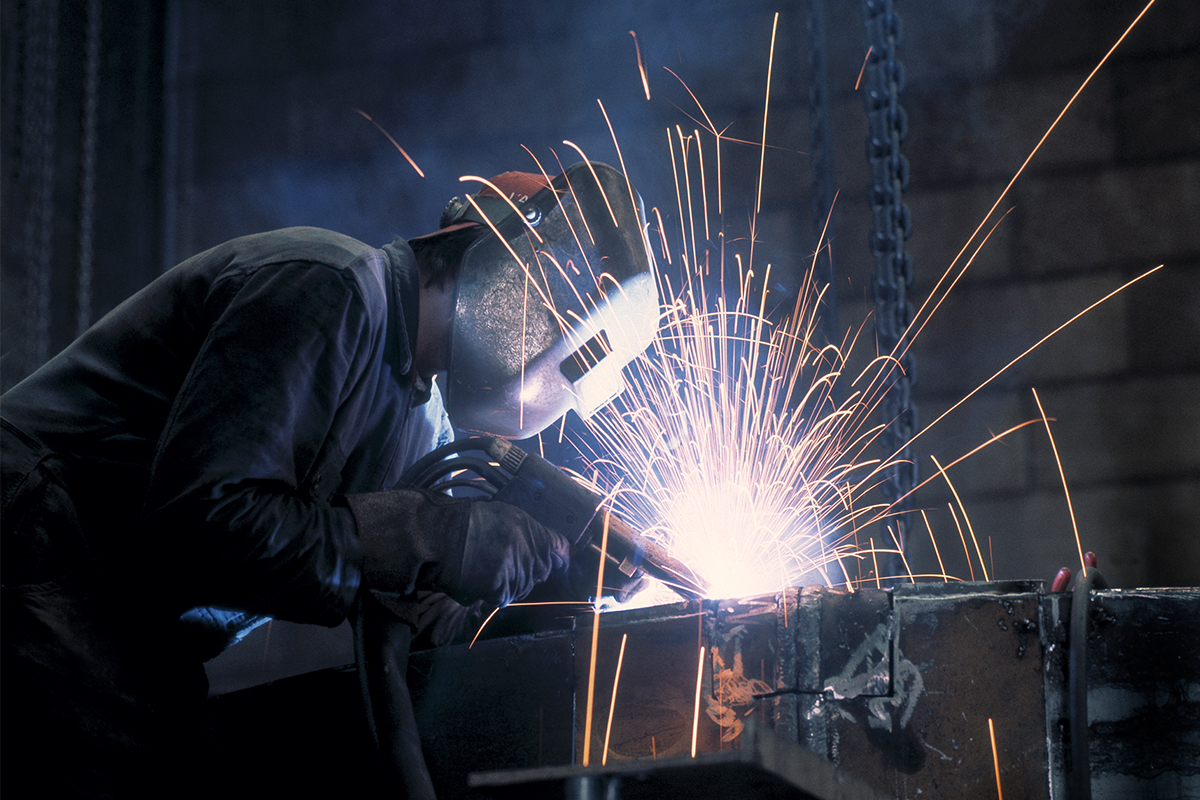The fabrication industry is currently in a digital transformation – and understandably, many fabricators are cautious to invest.
We get it. That’s why we’ve set up a quality and productivity research project to investigate this technology. And why we’re now inviting our industry to be a part of it.
We want to investigate the implications of this new technology and test its capabilities so you can make more informed decisions.
It’s clear that the latest wave of welding power sources comes with a wealth of new features. And, they’re all aimed at improving productivity of individual welders and the company as a whole. The two core functionalities we’ll be exploring are:
- The ability of the welding equipment to communicate with its environment, and
- The ability it has to record and store process parameters.
Why do power sources need to communicate, and who with?
Welding is one process where the achieved quality can’t be measured directly without destroying the very product that has been generated. Instead, we rely on indirect quality measurements and a whole set of quality assurance systems to ensure that welds of a required strength and quality are produced.
Part of the assurance system is the use of approved welding procedures, qualified welding personal, and the tracing of consumables and materials. The compliance with these requirements is checked prior and after the welding operation.
Smart welding machines can ease the burden of these checks and reduce the potential for human error in the process. To do this, the machine needs to know its current configuration, who’s using it and what the required setup is. And to eliminate a lengthy input process it needs to communicate.
Steps to smart welding success
In a first step, the welder makes themselves known to the machine by logging in. This can be done via a login on the machine interface, or without touch via a barcode or RFID reader. When welding consumables are loaded into the machine or are connected to it, they do the same by themselves. Or, more commonly with the help of the operator. The information related to this isn’t stored in the machine itself, but in a central database the machine communicates with.
The machine must be setup to the requirements of a job, as predetermined by the welding procedure. This can be accomplished by selecting a procedure from the company catalogue in the machine interface or by barcode. At this stage, it’s usually the welding supervisor who checks the setup complies with the requirement of the welding procedure and gives the go ahead. Thanks to the information entered into the welding equipment, these checks can be performed by algorithms built into the machine. The collected information is forwarded to the database and can be used for other purposes later on – like quality documentation.
With the weld setup complete, the welder can now proceed with welding the work piece.
Achieving quality assurance
Part of this comes down to the welding parameters to ensure they remain within the confines of the welding procedure. The welding supervisor’s role is to oversee and enforce this obligation.
Smart welding machines can help the supervisor in this by recording, storing and analysing the process data throughout the weld. Due to their ability to communicate, the welding equipment can make the supervisor aware of any violations of these requirements.
The process data can be stored in the database alongside the rest of the gathered information. And, the data can later be used for analysis at other stages – for example, arc on time studies, and during welding inspection.
Following the completion of a weld or a job, the welder can mark the job as completed to initiate the next fabrication stage.
The process data can also be used to make judgments on the achieved weld quality. The ultimate intention being to create an instant failure detection system to stop job processing as early as possible to avoid the need for rework.
A crucial piece of information for such a system is the position of the welding torch and the work piece throughout the welding process. For manual welding processes this information isn’t currently available and is under active development.
Mechanized and robotic welding systems can capture this information.
Is smart welding worth the investment?
More and more companies are investing in digital systems for their workshop. However, more often than not it is used in parallel with the traditional and trusted paper-based ways of operating.
Various software packages are competing for dominance in the marketplace, as are the data communication interfaces. Smart welding machines are available, but aren’t yet commonly used in our industry – and even rarer, to their full potential. They also come with an increased price tag and the need for specialised knowledge to set them up and integrate into the workflow.
Many in our industry are sceptical if the promised productivity gains are worth the investment. It’s why we’ve developed a productivity and quality research program to address this.
We’re currently setting up to run welding trials using smart welding machines. Not only will these give first-hand experience, it will allow us to verify some of the assumptions underpinning the promised advantages.
The project hopes to run with a range of machines from different suppliers. The aim is not to compare one brand against the other, but to establish technology guidelines for our members to specify future equipment. Our current setup enables us to perform manual and mechanized welding.
We’d like to invite manufacturers and suppliers of welding equipment, as well as our fabricators to become part of our research project. If you’re interested to discuss further, please contact our Welding Research Engineer, Holger Heinzel by email: holger.heinzel@hera.org.nz, or by phone on +64 9 262 4755.

